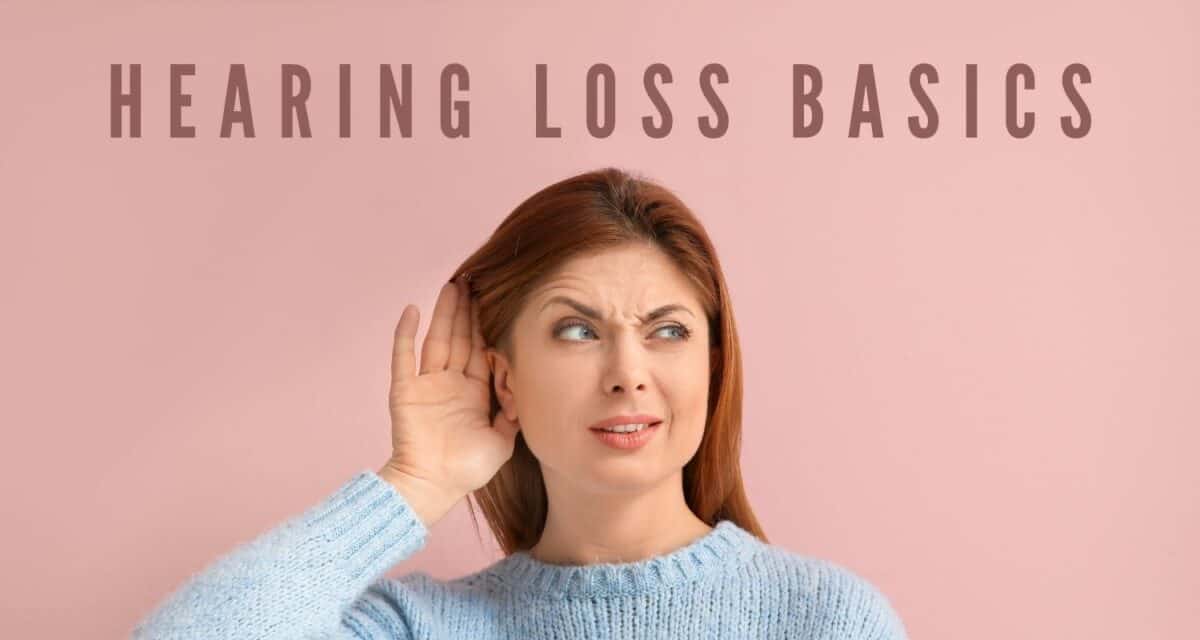Hearing loss is a prevalent medical condition in the US, affecting one in eight people aged 12 and older. It is especially prevalent in people over the age of 65, affecting approximately one in three people. Because it is an invisible condition, it is important to pay attention to the signs of hearing loss in order to seek proper treatment as soon as possible.
Signs of Hearing Loss
Hearing loss is hard to detect in yourself, so other people around you might notice it first. Pay attention if anyone comments about your hearing abilities.
The first signs of hearing loss include:
- Misunderstanding what people say in noisy places
- Feeling like those around you are mumbling
- Watching TV at a volume louder than others need
- Problems maintaining phone conversations
- Unusual mental and physical exhaustion after work or after seeing friends
Types of hearing loss
Conductive Hearing Loss
This type of hearing loss involves problems with the outer and middle ear. It usually consists of an obstruction between the ear and the sound outside. The good news is that it is generally treatable with medication or surgery.
Causes of Conductive hearing loss
Wax: This is the most widespread cause of conductive hearing loss. Wax blocks the ear and prevents sound from getting through.
Trauma & inflammation: Complications from trauma or inflammation could damage the external ear, or there could be an issue from birth that obstructs the entrance to the ear canal.
Otitis externa: This involves swelling inside the ear canal because of an allergy, skin infection, or inflammation, which affects hearing. This could jeopardize the eardrum, which is a very delicate membrane dividing the middle ear’s outer ear.
Sensorineural Hearing Loss
This type of hearing loss occurs when parts of the inner ear or central auditory system are damaged. Unfortunately, it is not treatable by medical means, which makes it a permanent hearing loss. It is also the most common type of hearing loss that we see!
Causes of sensorineural hearing loss
Age-Related
This is the most common cause of sensorineural hearing loss. Age-related hearing loss is called Presbycusis and mainly affects those over 60 years of age. Your body changes a lot as it ages, and this includes changes within the ear. The cochlea and its associated nerve pathways to the brain go through ‘wear and tear,’ which reduces your ability to pick up, transmit, and process sound. Presbycusis initially affects your ability to hear higher-pitched music, making it harder to focus on speech in environments with background noise.
Noise-induced
This is the second most common cause of hearing loss. Exposure to loud noise over the years can damage the delicate hair cells in the cochlea, the organ we use for converting sound into nerve signals which can be processed by the brain. The louder the noise we experience, the less time we can be exposed to it before it starts to damage our hearing. Although noise-induced hearing loss (often abbreviated to NIHL) has commonly been associated with noisy workplaces, the dangers of NIHL are slowly shifting to the leisure realm, with recreational shooters, concertgoers, and earphone users, particularly at risk.
Mixed Hearing Loss
It’s possible to have both conductive and sensorineural loss. We classify this as a mixed hearing loss.
Seeking Treatment for Hearing Loss
People react in different ways when they begin to notice their hearing loss. Some slowly accept it and research methods to treat it, while others respond emotionally, feeling vulnerable, worried, or angry.
The good news is that there are things you can do to help treat your hearing loss. First, you will want to get your hearing tested so that you are aware of the full extent of your hearing loss. It might not be as bad as you think, or it could be even more severe than you expected. The important thing is that you know. From there, you can seek further treatment.
The problem arises when people sit on the issue for years and years. This may seem extreme, but people do wait, on average, seven years before seeking treatment. That’s seven years of living with an impairment. Because of this, only one in five people who would benefit from hearing aids is wearing one.
If hearing aids are recommended for you, then the faster you start using them, the more smoothly you can adjust to them so that you can continue to stay connected to those around you. This helps avoid the social isolation that comes from impaired hearing.
You don’t have to go through this alone. Why not book a consultation with us to see how we can help put you on a journey to better hearing health?


